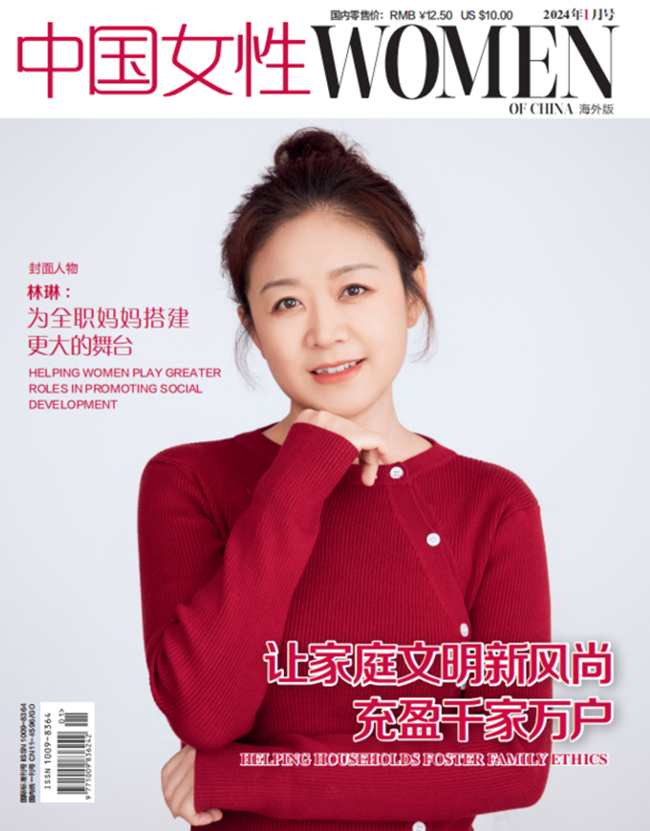Stitching up History
An all-women team at the Palace Museum conserves old textiles, Wang Kaihao reports.
Beauty is probably the reason that has kept them sitting in front of exquisite centuries-old woven pieces and forgetting the flow of time.
Qu Tingting has worked in the textile conservation studio of the Palace Museum in Beijing since 2013. Doing the needlework on ancient Chinese embroidery, silk pieces and other types of textiles, Qu says she does not have even one moment of boredom.
"It's not because you are interviewing me and it sounds better saying so," Qu says, laughing in the studio. "Indeed, I feel fortunate to have found a job that I really enjoy and can be fully devoted to."
With fashion designing as her major in college, Qu says in her current work, she "feels more comfortable as it is a quieter working atmosphere than that industry".
"Being a doctor curing the ancient textiles is an ideal choice," she says.
Swerving away from a career where people always catch up with the running clock, Qu's current job is very time-consuming. In the past eight years, Qu has fixed merely some 50 relics.
"Sometimes it even takes a whole month to sew just a hole," she says. "I can even count how many stitches I make every day. Before every stitch, I need rigid concentration."
No matter how sparkling these textiles were when they first came to the Forbidden City, they were dusty when they were handed to conservators later. Cleaning the dust has become a key part in their job. Using a specially designed "miniature vacuum cleaner", an area up to the size of a hand can be cleaned a day. These relics deserve the utmost caution as textiles are one of the most fragile cultural relics in the museum.
The Palace Museum, also known as the Forbidden City, was China's imperial palace from 1420 to 1911.The royal families, especially the Manchu rulers of the Qing Dynasty (1644-1911), left myriad relics, which stand for advanced craftsmanship, in the compound.
Over 180,000 textile pieces are now housed at the Palace Museum, according to the museum's statistics of its inventory, completed in 2015, making it among the biggest collections of such cultural relics in the world. Royal garments and Peking Opera costumes are the signature relics in this category, but textiles were almost ubiquitous in the former imperial palace and used to make windows, paintings, folding fans, cushions, pillows, bedsheets, valances, and other interior decorations. The artisans were generous in demonstrating their creativity by weaving auspicious patterns in corners of the imperial palace.
Consequently, following the renovation of the palatial architecture, more textile relics were sent to the conservation studio. For example, in the ongoing renovation of the Hall of Mental Cultivation-the last eight Qing emperors' residence-conservators have new tasks: the daily-use articles were moved from that hall to the studio.
"There're too many textiles in the warehouse to be conserved, but the items are undisturbed unless some pieces need to be exhibited or urgently fixed," Wang Xu, another conservator in the studio, says. "Once a textile is taken out from the warehouse, the wear and tear, however tiny, is inevitable. So sometimes the way to protect it is to leave it as it is."
The fixed textiles are usually not taken back to their original homes in the palace. As a way to prolong their life, they are kept in the warehouse where the temperature is maintained between 17 and 25 C and humidity between 50 and 60 percent.
Including Qu and Wang, all five conservators in the textile conservation studio are women. The studio is the only all-women department in the cultural relic conservation center of the Palace Museum, China's biggest facility of its kind.
"Men prefer handling artifacts made of wood and metal," Wang says. "Maybe not so many of them are willing to take up sewing needles. But I think in such a job that is highly demanding about details, we can probably do better."
For instance, they often have to string pearls, the size of millet grains.
"I always wonder what kind of tools were used by ancient artisans to do that," Qu says. "It's still so difficult for us in spite of all kinds of modern technology."
A modern technical approach is helping the conservators work in a way that could not be imagined by ancient artisans, like analysis of specific material. In the old days, people could only refer to their eyes, fingers and experiences.
"A basic principle in our work is not to touch the textile until it is necessary," Chen Yang, a leading conservator in the studio, says. "But even with the help of analytical machines, we cannot be absolutely sure we chose the right material or drafted the perfect conservation plan. Maybe someone in the future will fix our errors."
So, all the fixing on the textiles are "reversible", Chen says. Newly added materials will not be directly sewed with the original fibers. They will be made into liners that can be later removed if necessary. If some parts of paintings on textiles are worn out, the conservators will not use their needles to remake the missing images as a way to retain historical information.
"Conservation is not to bring the perfect appearance to a textile like tailors," Wang says. "Our duty is to 'consolidate' these relics and make them survive as long as possible."
But experienced tailors and artisans can still offer these conservators a helping hand. For example, kesi (literally meaning "cut silk"), a technique representing the highest level of Chinese textile art, is commonly seen on luxurious silk pieces in the Forbidden City, and the technique, which mainly served the royal court during the Qing Dynasty, is now only grasped by some leading artisans in Jiangsu province.
"We refer to them to make the materials," Chen says. "It's also a way to revive traditional craftsmanship through the conservation of cultural relics."
There is a wood-framed loom in the studio. In their spare time, the conservators often practice traditional weaving, even kesi technique. Now, in most cases, they can make the needed materials by themselves.
Working as a conservator needs versatile expertise. Other than good hands, they need keen eyes which are particularly sensitive to colors to pick up the right thread. That reminds Qu of her days in the doorway of the fashion industry.
"I left fashion long ago," Qu says. "Taste changes so fast in that industry, and if I design something today, maybe no one will buy it. But if we have time, we'll make some lovely bags, like those to hold our tools. That pleases ourselves."
Facing fancy ancient textiles, the conservators say they also sometimes try to imagine the royal stories behind them. During the recent restoration of a noble woman's pouch, Qu could not help wondering what was put in it. However, they usually do not have time for such romantic reminiscence.
"Your mind has to be fully focused during work," Wang says. "And you have to learn everything about the textiles. Sometimes you feel tired, but it feels fruitful to bring a second 'life' to them."
Having worked in the studio for 15 years, Wang recalls the earliest days there.
"I was only the second conservator in the studio, and we almost had nothing," she says. "We've been gradually better equipped. We have more team members and a new room. It's like making a home better and better."
When asked if she had any wish for the International Women's Day on Tuesday. Wang jokes, "Maybe we'd like to see a man in our team. At least, when moving a heavy blanket, he can help us."
(Source: China Daily)
Please understand that womenofchina.cn,a non-profit, information-communication website, cannot reach every writer before using articles and images. For copyright issues, please contact us by emailing: website@womenofchina.cn. The articles published and opinions expressed on this website represent the opinions of writers and are not necessarily shared by womenofchina.cn.






.jpg)

 WeChat
WeChat Weibo
Weibo 京公网安备 11010102004314号
京公网安备 11010102004314号